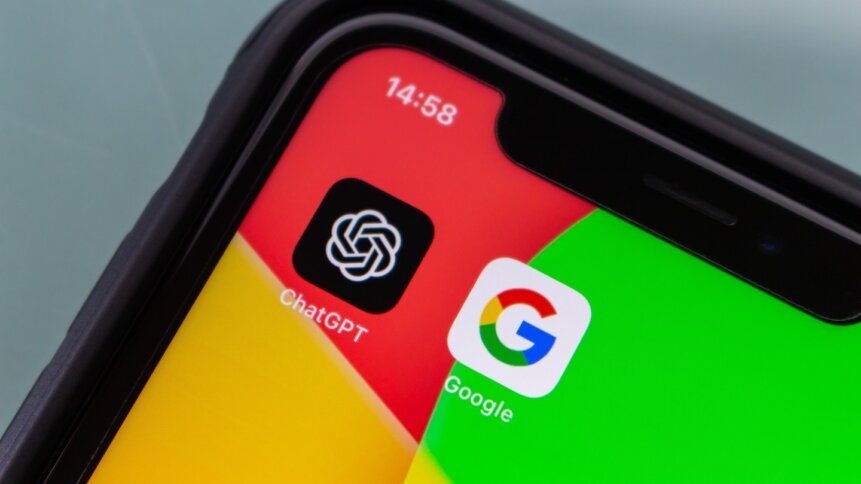Google releases Bard in the US and UK

After much hype, Google has finally made Bard available to the public, although for now, it is limited to select users only in the US and UK. The move came a month after the internet giant first unveiled Bard to the world after getting leapfrogged decisively by OpenAI, the maker of ChatGPT.
Google was once a frontrunner in all things AI. What many may not know is that the GPT model used for ChatGPT is based on a type of neural network called a transformer, which was introduced in a 2017 paper by Google itself. Transformers are a kind of neural network that can track where each word or phrase appears in a sequence.
READ NEXT

ChatGPT: drive me home!
Google has also been testing the LaMDA technology, or Language Model for Dialogue Applications, since 2015. At that point, the technology underlying Bard was not released beyond a small group of early testers. But when ChatGPT was finally released late last year, Google’s CEO Sundar Pichai declared “code red,” making AI the company’s central priority.
It spurred teams inside the company, including researchers who specialize in studying the safety of AI, in collaborating to speed up the approval of a wave of new products. Even Google’s LaMDA team was asked to prioritize working on a response to ChatGPT, according to an internal memo viewed by CNBC last month.
“In the short term, it takes precedence over other projects,” the email warned, instructing that some employees stop attending specific unrelated meetings. The idea that Microsoft had pumped billions more into OpenAI in the past year only built more pressure on Pichai’s teams. The speed at which Google was to get Bard released was even doubted by many, particularly given OpenAI and Microsoft’s breakneck pace in releasing their tools.
Google Bard is here, limited to just the US and UK for now.
More than a month after unveiling Bard for the first time, Google announced it was opening its AI platform to a limited number of users in selected countries this week. The company officially allowed US and UK people to sign up for its generative AI product with plans to expand availability over time to more countries and languages.
The post, “Try Bard and share your feedback,” was authored by Sissie Hsiao, product vice president, and Eli Collins, research vice president. “We’ve learned a lot so far by testing Bard, and the next critical step in improving it is to get feedback from more people,” the blog posting reads.
Adding that Bard is powered by a research large language model (LLM), Google said an LLM could be considered a prediction engine. “When given a prompt, it generates a response by selecting, one word at a time, from words that are likely to come next. Picking the most probable choice every time wouldn’t lead to very creative responses, so there’s some flexibility factored in,” the post noted.
YOU MIGHT LIKE

ChatGPT and the downside of digital democracy
Google believes that the more people use them, the better LLMs get at predicting what responses might be helpful. In a memo to employees on Tuesday, Pichai shared that 80,000 Google employees contributed to testing Bard, responding to Pichai’s all-hands-on-deck call to action last month, which included a plea for workers to rewrite the chatbot’s wrong answers.
Pichai also said the company is trying to test responsibly and invited 10,000 trusted testers “from a variety of backgrounds and perspectives.”
Plenty of caveats.
The blog posting by Google was also filled with a handful of disclaimers, mainly highlighting that Bard may spout misinformation. “While LLMs are an exciting technology, they’re not without their faults. For instance, because they learn from a wide range of information that reflects real-world biases and stereotypes, those sometimes show up in their outputs,” the post reads.
That said, Google noted that Bard might provide inaccurate, misleading, or false information while presenting it confidently. The internet giant also said that Bard is guided by the company’s AI Principles, continuously focusing on quality and safety.
Even in Pichai’s memo to his employees, he reminded them, “As more people start to use Bard and test its capabilities, they’ll surprise us. Things will go wrong. But the user feedback is critical to improving the product and the underlying technology.” The internal memo signals how the company has been trying to keep pace with the quickly evolving advancements in generative AI technology over the last several months.
For now, users with access can conduct back-and-forth conversations with Bard, similar to Microsoft’s new Bing service. Google will only initially limit the length of conversations for safety reasons, but those limits will be increased over time. We can expect to learn more about the breadth of Google’s progress in AI with Bard at the company’s annual developer conference in May.








